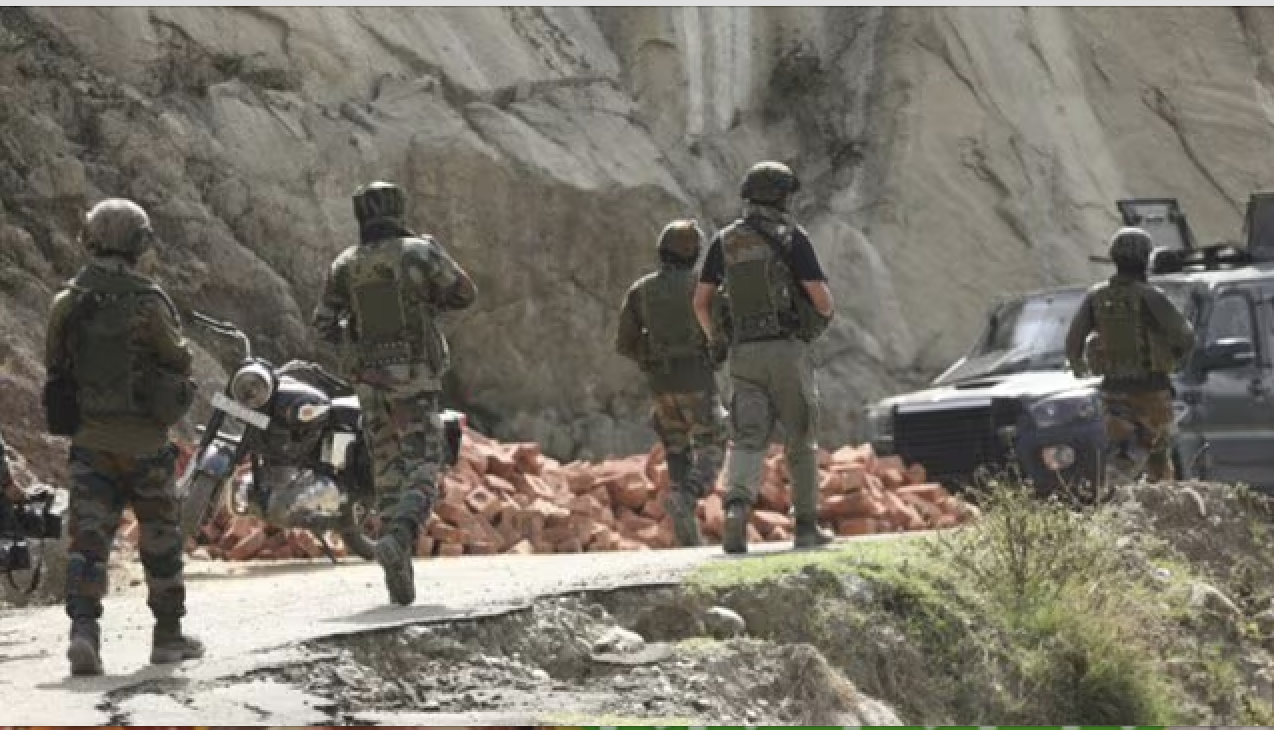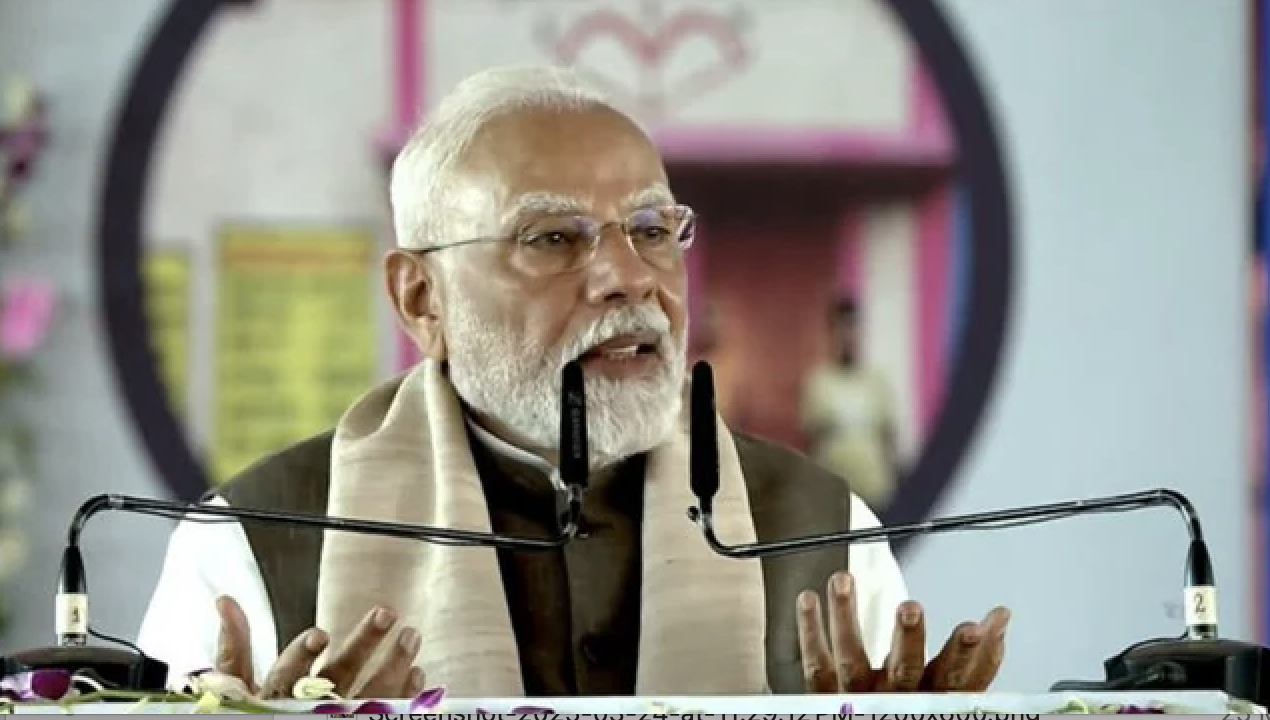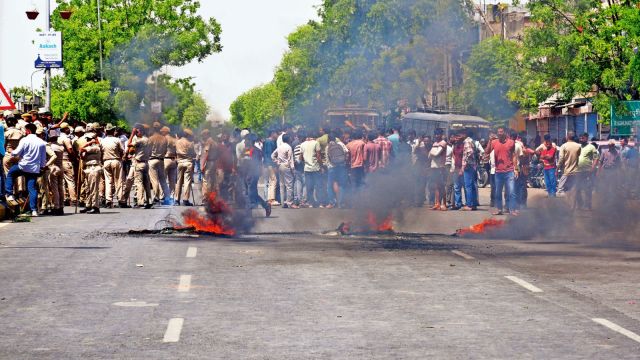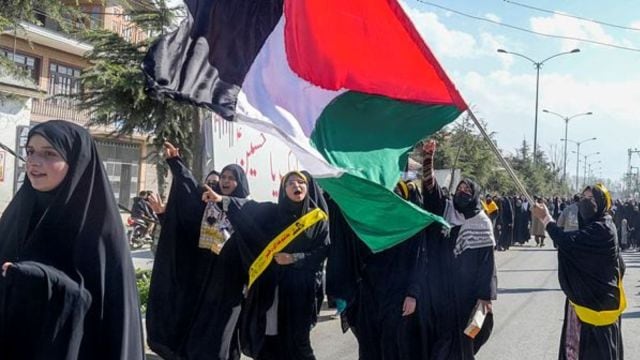
New Delhi: In a detailed analysis of the communal violence in Goa during the Ram Navami celebrations on April 10, 2022, a fact-finding team has found that the organisers of a festival rally – unprecedented in scale – have enjoyed significant protection from action, despite having flouted all manner of rules and delivered communal slogans.
The team was constituted by the Citizens’ Initiatives for Communal Harmony (CICH), which was set up in 2006, after communal riots at Curchorem Sanvordem and which seeks to prevent and conduct effective redressal of grievances about communal violence.
The fact-finding team consisted of educationist and architect Tallulah D’Silva, human rights lawyer Saranga Ugalmugle, independent researcher Amita Kanekar, and activist and CICH convenor Albertina Almeida.
The report underscores the unprecedented nature of both the ‘celebrations’ and the violence that stemmed from it. It makes detailed study of news reports and also reports on interviews with law enforcement, those who organised he Ram Navami rally and others. The fact-finders’ also reflect on the background that led to the communal incident.
It observes how, across India, communal incidents took place on the day, thus highlighting the need to decode the reasons that led to the one on Goa.
It notes that permission for the large Ram Navami “Shobha Yatra” procession was given by police to Rajiv Jha, of the Kesariya Hindu Vahini (KHV) outfit. Jha, it notes, had been linked to the communal disturbances at the Old Sancoale Church Frontispiece.
The report observes the communal messaging of the rally – clear signs of which were seen even before it began on WhatsApp groups and other social media channels.
Invitations called for Hindus to gather in solidarity with “Hindus fighting to reclaim the Vijayadurga Temple from “Christian missionaries” who have “illegally” claimed the land as ‘Frontispiece of Sancoale Church’,” the report found.
“The rally was thus not merely a religious rally to celebrate Ram Navami but had an inherent Hindutva colour from the start,” it says.
In scale and messaging, thus, this rally was “unprecedented,” says the report, questioning authorities’ decision to grant permission for it as a ‘religious procession’.
The committee also noted that many functionaries and office-bearers of Hindu temples in the Vasco and Sancoale area, through which the rally passed, did not participate in it and claimed to have no association with it.
There was also a clear pattern of creating disturbance near the worship places of other communities, the report found.
However, even though police had intelligence inputs on a plan for the rally to pass through the Old Sancoale Church Frontispiece at Sancoale, though it was not part of the permitted route, it did not make efforts to stop it, the report says.
Other instances of the rally flouting permission were found in the presence of a tall ‘chariot’ in it, when permission was only for bikes and cars.
“The rally attempted to create disturbance outside Minar Masjid in Zuarinagar, Masjid-e-noor at MES college, and Sancoale Church, with extra-loud slogans and music,” the report says. Among slogans used were “Jai Shri Ram.”
Doubling down on counter claims, the report says that, “The stone pelting on the Ram Navami procession from the Aqsa Mosque or the nearby madarsa, as claimed by the rally organiser…was not possible given the geography of the site.”
The report also notes that there was a “second unit” of miscreants who attempted to enter the Aqsa Mosque with saffron flags and were later joined by a 150-men mob. They also injured two men, one with a disability before entering the mosque. Attacks on bystanders and local representatives also took place outside the Vasco police station, the report says.
Efforts were made to interrupt prayers at the mosque with chants of “Jai Shri Ram” and “Muslims are terrorists.”
The report observes how police action in the aftermath of the violence ran contrary to the course of findings. Three FIRs registered were on the basis of complaints by three individuals led to the arrest of 13 persons, all Muslims. All 13 were arrested in connection with one FIR and none against the other two.
The march organiser Rajiv Jha and others “got an immediate audience with the Chief Minister, Dr. Pramod Sawant” the very next day. There is no FIR against the organisers of the rally, who flouted rules, circulated communal messages and caused injuries through assault, among other allegations.
Members of the Bharatiya Janata Party were present both at the rally and at a follow-up convention on April 17 where claims were made that “anti-nationalists” pelted stones on April 10, the report notes.
Two policemen were transferred without due process having been followed, the report alleges.
“There is no transparency nor information disseminated at the local level about the progress of the investigations into the complaints, including details of arrests, etc, that could demonstrate justice is being done, and give reassurance to the general public. The post of Public Relations Officer of the Goa Police, who was tasked with disseminating information to the public is vacant,” the report notes.
The full report is expansive and details several nuances of the matter, in addition with records of witnesses and those allegedly involved.
Among several suggestions and recommendations made by the fact-finding committee are the formation of a minority commission, detailed inquiry into the day’s events and a close watch on leaders whose goal is to disrupt peace through communal rabble-rousing.
This article first appeared in thewire.in






